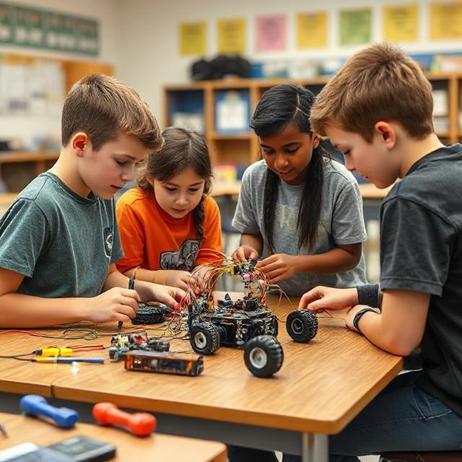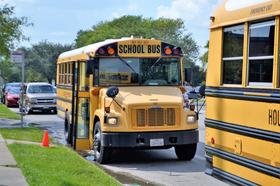The Rise of STEM in Public Schools: 2025 Update
Introduction
Over the past decade, the push to deepen STEM—science, technology, engineering and mathematics—education in U.S. public schools has grown steadily. Today, in 2025, this movement is entering a new phase: larger federal investments, sharper focus on equity, and the integration of emerging technologies. For parents, students and educators navigating the public-school system, understanding the state of STEM in public schools is increasingly important.
Why STEM matters in public education
The logic is clear: careers in STEM fields continue to expand, offering higher wages and greater opportunity. According to recent data, STEM jobs in the United States are projected to grow by 10.4% between 2023 and 2033—more than double the growth rate of non-STEM occupations. The median annual wage for STEM occupations is over $100,000 compared with roughly $46,000 for non-STEM jobs. Meanwhile, the global market for K-12 STEM education was estimated at US $60 billion in 2024 and is forecast to more than double by 2030. Grand View Research
These trends underscore why public schools are increasingly prioritising STEM pathways—not simply as choice options, but as core curriculum enhancements designed to strengthen college readiness and workforce preparation.
Current public-school landscape: scale and performance
As of 2025, U.S. public elementary and secondary schools service tens of millions of students. One recent analysis projects roughly 15.2 million secondary students enrolled in public schools in 2025. Research.com Student-teacher ratios average about 15:1 nationally in 2025, with some states experiencing much higher levels (22:1 in some western states).
Despite this scale, results in STEM disciplines remain uneven. A 2024 survey found only 28 % of U.S. adults believe that K-12 STEM education in America is “above average” compared with other wealthy nations; meanwhile, students ranked 28th of 37 OECD countries in math and 12th in science in the 2022 PISA assessments.
Taken together, these figures highlight a crucial point: while public-school STEM initiatives have proliferated, measurable outcomes remain mixed. This makes it all the more important for schools, districts and parents to scrutinise program design, equity of access and alignment to future workforce demands.
Key 2025 policy and funding updates
Several policy and funding developments in 2025 are shaping STEM opportunities in public schools.
The federal initiative YOU Belong in STEM, led by the U.S. The Department of Education continues to target K-12 STEM access and educator development; its 2024-25 convenings emphasized supporting students with disabilities and strengthening rural STEM educator pipelines.
A July 2025 report by the U.S. The Government Accountability Office (GAO) highlighted the challenges rural public schools face in STEM education (about 10 million K-12 rural public-school students are impacted) and noted gaps in evidence of effectiveness.
The White House’s five-year Federal Strategic Plan for Advancing STEM, published November 2024, sets out goals for 2024-2029 to improve access, quality and equity in K-12 STEM and computer science education.
These developments reflect a transition from broad promotion of STEM toward tighter scrutiny of outcomes, equity and implementation fidelity in public-school systems.
Trends in implementation at the school and district level
In 2025, public schools and districts are pursuing STEM expansion in several ways:
Early STEM exposure: Elementary schools increasingly integrate engineering and computational thinking alongside traditional science and math. Programs such as Project Lead The Way (PLTW) now offer PreK-grade 5 modules (“Launch”), middle-school pathways and high-school engineering, biomedical and computer-science courses. pltw.org
Computer science and AI integration: A 2025 study of seven public high schools found computer science (CS) course enrollment rose from about 10 % in 2018-19 to 15 % by 2022-23, but dropped to 13 % in 2023-24—underscoring that growth is not uniform and may be fragile. Simultaneously, research into K-12 use of generative AI in math and science found emerging patterns in teacher adoption and institutional support.
Career-connected pathways: Many public-school systems now embed STEM into CTE (career and technical education) pathways and dual-credit programs. For example, new regional public-private partnerships target advanced manufacturing, semiconductors and electric-vehicle technologies for thousands of PreK-12 students. Midland Daily News
Focus on equity and access: Districts are tracking under-represented student engagement in STEM courses, particularly among girls, students of colour and those in rural or low-income schools. These equity efforts are increasingly baked into grant applications and federal funding criteria.
Challenges facing public schools in STEM
Despite the momentum, several persistent challenges remain:
Equity gaps in access: Students in wealthier districts more often have access to advanced STEM courses (AP physics, engineering design, CS) while schools in disadvantaged areas may lack qualified teachers or labs. The GAO report flagged rural areas as especially under-resourced.
Measurement of outcomes: While many schools tout “STEM” branding, robust evidence of improved achievement, persistence in STEM majors or workforce entry remains limited. Experts at the National Academies note that scaling and sustaining innovation in STEM education is still a systemic challenge.
Recruitment and retention of STEM teachers: Districts report difficulties recruiting qualified teachers in CS, engineering and STEM disciplines broadly. Teacher professional-development and retention remain critical.
Integration versus separation: Some schools treat STEM as an “add-on” rather than integrating it into core curriculum. That limits impact. Also, broad declines in math performance (see PISA and NAEP) raise concern about foundational readiness.
What parents and educators should watch for in 2025-26
For families considering public-school STEM opportunities and for educators shaping programs, here are key indicators to monitor:
Course access and sequence: Check whether your school offers a clear sequence of STEM courses (middle school to high school), including computer science, engineering and labs.
Teacher qualifications and classroom resources: Ask whether STEM teachers have specialty certification or training, and whether the school provides properly equipped labs or project-based learning environments.
Partnerships and pathways: Schools partnering with universities, industry or research organisations often offer stronger STEM opportunities and clearer career connections.
Equity of access: Look for schools that monitor STEM enrollment by gender, race/ethnicity and socioeconomic status. Ensure advanced STEM opportunities are accessible to all students, not just a select few.
Outcome tracking: Good STEM programmes will track student outcomes—such as AP STEM exam performance, college matriculation in STEM fields or local technical-career placements.
Continuous improvement and innovation: Given rapid technological change, schools that actively update curriculum to reflect AI, data sciences, robotics and emerging fields are better positioned for 2025-26 and beyond.
The public-school STEM advantage (and caution)
Public schools have distinct advantages in the STEM evolution. Because they serve broad populations, when they successfully scale STEM programming they can impact large numbers of students and help narrow the socio-economic divide in STEM access. Many districts are now embedding STEM into standard curriculum rather than treating it as optional, thus normalising exposure.
Nevertheless, the caution lies in assuming that all STEM branding is equal. Not all STEM initiatives are created equal from the standpoint of depth, rigour, or alignment to career/college readiness. And given that performance on international benchmarks for U.S. public schools remains mixed, stakeholders should remain vigilant.
Link to further guidance
For families exploring public-school STEM offerings and seeking evaluation tools, the website of the National Science Foundation (NSF) provides funding history and research summaries related to K-12 STEM education. Also, for parents and students interested in comparing school programmes—including STEM tracks—see our coverage at BoardingSchoolReview.com (public-school sections).
Conclusion
As we move further into the 2020s, STEM education in U.S. public schools is entering an era of refinement—less about simply “adding labs” and more about deepening curriculum, assuring equity and aligning to future careers. For parents, students and educators, the essential question is no longer whether STEM exists in a school, but how robust, accessible and future-aligned that STEM programme really is. With smart choices and informed evaluation, public schools can deliver serious STEM opportunity at scale—and in 2025, the momentum is clearly building.














